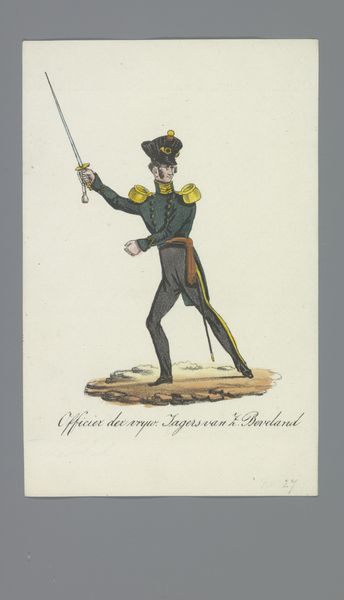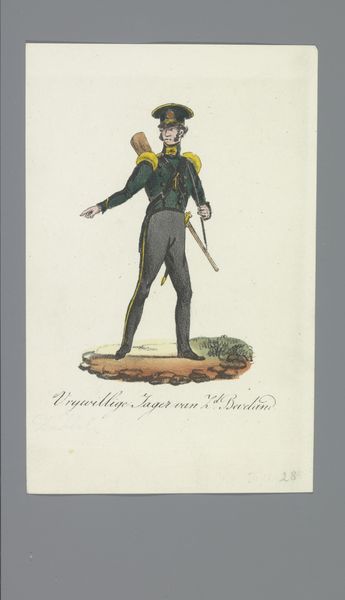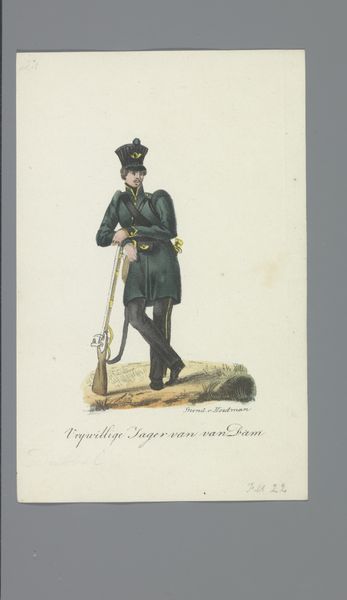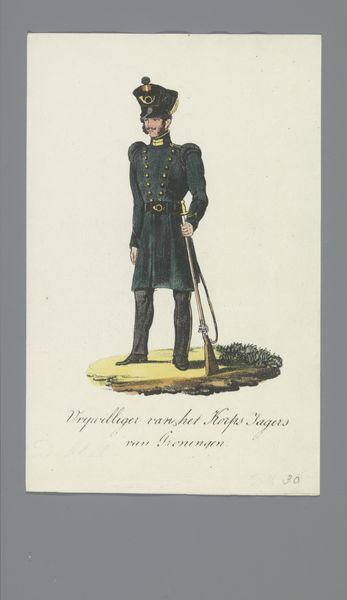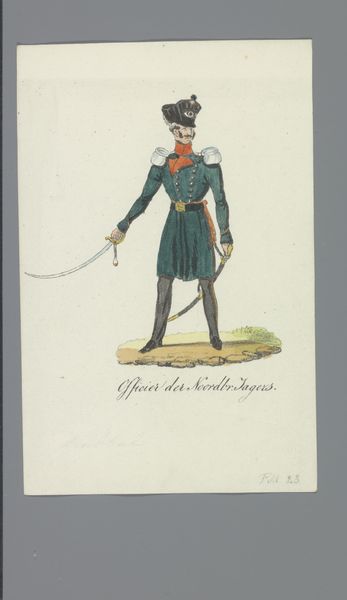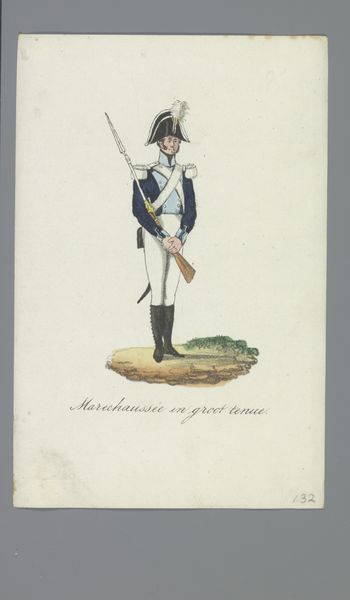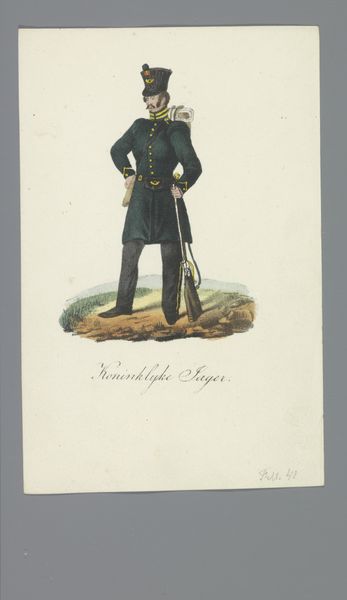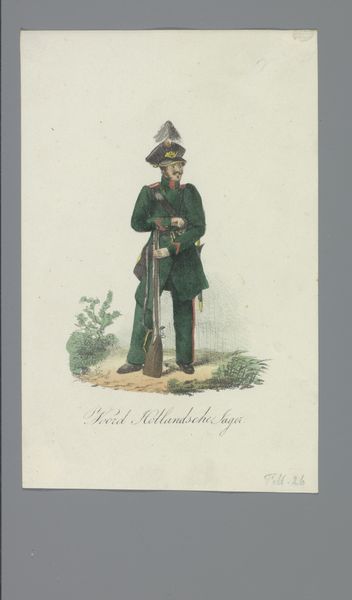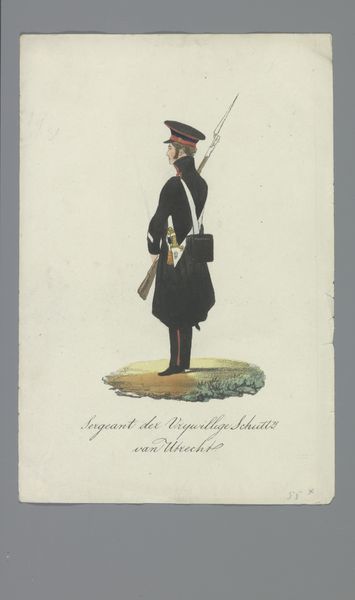
drawing, watercolor
#
portrait
#
drawing
#
watercolor
#
romanticism
#
costume
#
watercolour illustration
#
genre-painting
Dimensions: height 170 mm, width 110 mm
Copyright: Rijks Museum: Open Domain
Curator: Here we have “Noord Brabandsche Vrijw. Jager,” a watercolor drawing completed sometime between 1835 and 1850, attributed to Albertus Verhoesen. It’s currently held in the Rijksmuseum. Editor: The figure appears suspended—almost theatrical—with the dramatic forward tilt and poised rifle suggesting impending action frozen mid-frame. Curator: Indeed. Let’s consider the formal elements. The color palette is subdued, dominated by that somber green of his tunic, set against grey trousers. The brushstrokes are delicate, particularly in the rendering of his face, giving a clear sense of depth with minimal shading. The entire image, as such, demonstrates exceptional control over line and form. Editor: Absolutely, and this tight control emphasizes the deliberate construction of identity, doesn't it? The detailed uniform speaks volumes about the subject's social role, specifically as a volunteer Jager from Noord Brabant. Those sartorial signifiers of military service highlight broader issues of patriotism and belonging, but also exclusionary narratives in defining who is willing to be a hero of a particular nation at a specific moment. Curator: Interesting. However, my focus remains on how Verhoesen employs romanticist tropes to explore shape and volume, rendering form through linear perspective. The lighting across the soldier's figure helps delineate a clear focal point. Editor: Yet that precision also captures an ideal. We're witnessing a potent romantic nationalism through costumery; this brave 'everyman' poised against historical Dutch anxieties about independence, and in that moment the portrait crystallizes popular Romantic myths concerning citizen armies. Curator: You view the social themes inherent within Verhoesen’s watercolor through political context, as defined through visual codes... It may certainly offer this perspective. Editor: These types of romantic portrayals have long since romanticized certain themes of violence in war, framing and celebrating forms of masculine nationalism that could prove quite toxic as mythmaking exercises! Curator: A fascinating intersection. As you note, these signifiers extend outward to encompass contemporary implications. Editor: Examining such artworks opens crucial avenues through which we can reassess nation building. Curator: Precisely, using this study of light, volume and character, to examine the layers in the visual and social histories.
Comments
No comments
Be the first to comment and join the conversation on the ultimate creative platform.
